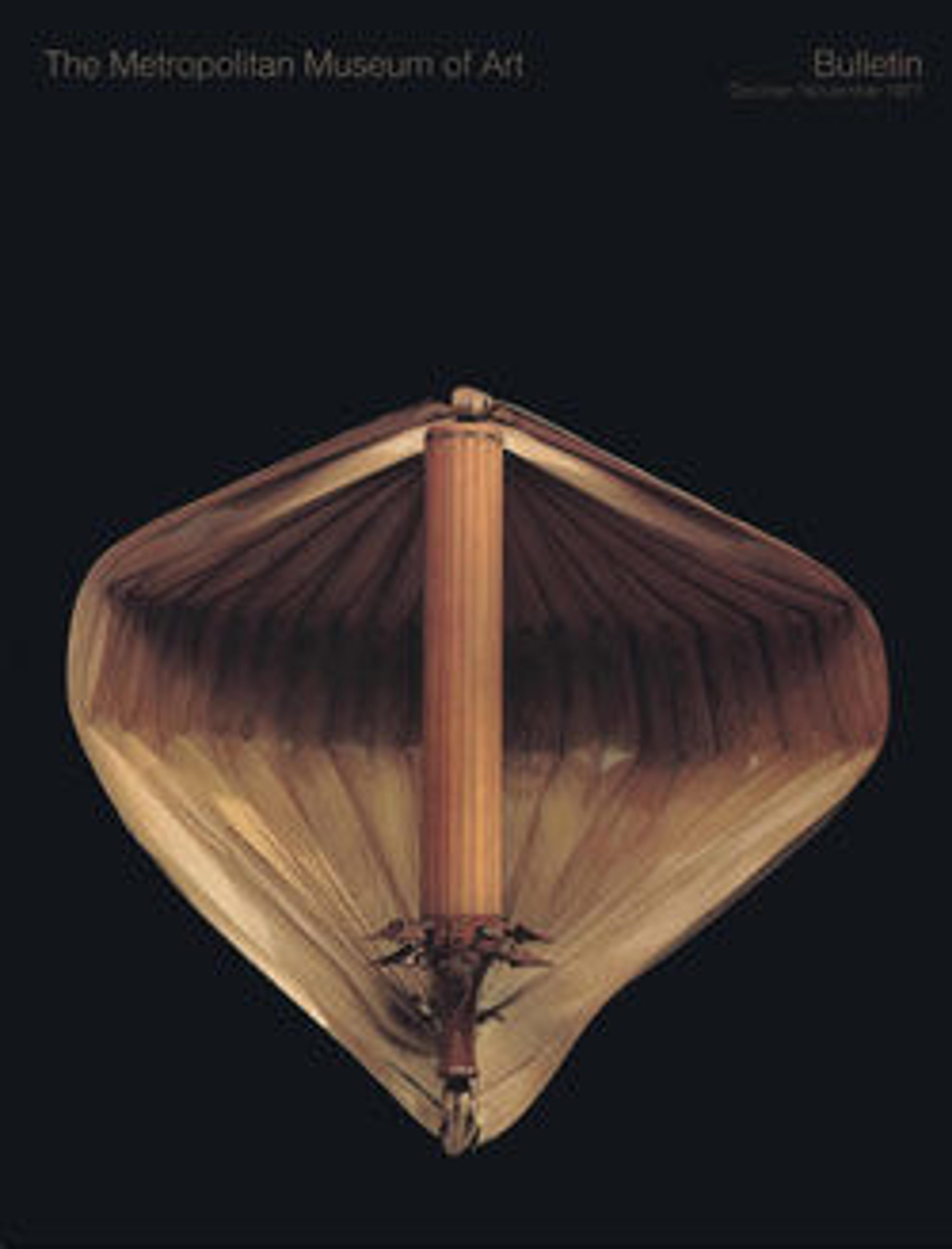Guitar
This highly decorated guitar is also an early example of a six-string, single-course guitar. The elaborate decoration features classical figures, musical instruments, and floral motifs made from ebony and fit into an ivory ground covering the back, sides, neck, and headstock of the guitar. A second guitar at the Yale Collection of Musical Instruments features the same decoration, only in reverse, indicating that the decoration was made at the same time by cutting through thin layers of stacked ebony and ivory. A portrait in the center of the upper back is believed to be of Giovanni Paisiello based on his 1791 portrait. Paisiello was a composer of opera and many of his works were transcribed for use on other instruments and his pieces were a favorite of guitarists. The fingerboard is covered with tortoiseshell over red paint with inlay of an ivory satyr where the neck meets the body. A carved wooden rosette may be a replacement and is surrounded by an ivory hexagon with inlaid ebony decorations of instruments and flowers. The decorative style is evocative of Baroque guitars of the seventeenth century. The six-string, single-course guitar became popular in Naples at the end of the eighteenth century and then spread throughout the rest of Europe replacing the earlier five and six double-course guitars.Technical description and drawings by Daniel Wheeldon (2016).
Artwork Details
- Title: Guitar
- Date: ca. 1800
- Geography: probably Naples, Italy
- Culture: Italian
- Medium: Spruce, ebony, ivory, tortoiseshell, mother-of-pearl, brass
- Dimensions: H. 36 × W. 10 5/8 × D. 3 7/8 in. (91.4 × 27 × 9.8 cm)
- Classification: Chordophone-Lute-plucked-fretted
- Credit Line: Rogers Fund, 1969
- Object Number: 69.29
- Curatorial Department: Musical Instruments
More Artwork
Research Resources
The Met provides unparalleled resources for research and welcomes an international community of students and scholars. The Met's Open Access API is where creators and researchers can connect to the The Met collection. Open Access data and public domain images are available for unrestricted commercial and noncommercial use without permission or fee.
To request images under copyright and other restrictions, please use this Image Request form.
Feedback
We continue to research and examine historical and cultural context for objects in The Met collection. If you have comments or questions about this object record, please complete and submit this form. The Museum looks forward to receiving your comments.
